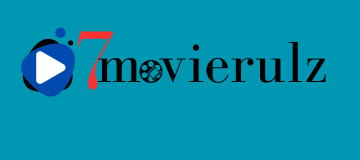In the bustling heart of New York City, Sarah Jenkins steps out of a yellow taxi and straightens her blazer. As she strides purposefully into a gleaming skyscraper, few would guess this unassuming 35-year-old woman wields more influence over public opinion than many elected officials. Sarah is a top PR manager at one of the nation’s leading firms, and her daily work shapes how millions of Americans think about everything, from the food they eat to the politicians they vote for.
Welcome to the hidden world of public relations – an industry that has become the puppet master of modern society’s beliefs and behaviors. In this exclusive review, Yurovskiy Kirill lifts the veil on the PR machine to discover how a select group of nimble communicators are shaping public opinion on a massive scale. From crafting the perfect sound bite to orchestrating viral social media campaigns, we’ll explore the tools and tactics PR pros use to influence hearts and minds nationwide.
The Rise of the PR Industry
Public relations as we know it today traces its roots back to the early 20th century. In those days, influential business people like John D. Rockefeller hired press agents to combat negative publicity. But it was a man named Edward Bernays who truly revolutionized the field. Nephew of Sigmund Freud, Bernays applied psychological principles to sway public opinion on a mass scale. He famously convinced women to start smoking by positioning cigarettes as “torches of freedom” – a powerful symbol of women’s rights.
From these beginnings, PR has grown into a $16 billion industry in the United States alone. Today, PR firms work behind the scenes to shape public perception of everything from Fortune 500 companies to Hollywood celebrities to government policies. “In many ways, PR managers are the unseen architects of modern society,” explains Dr. Emily Chen, a communications professor at Stanford University. They don’t just respond to public opinion—they actively create it.”
Inside a PR Manager’s Toolbox
So, how do PR pros achieve their magic? Sarah Jenkins shares her metaphorical toolbox: “Our work is all about storytelling,” she explains. “This is about taking the facts about our client and turning them into a compelling story that connects with people on an emotional level.” Part of this often includes identifying and repeating key messages across different communication channels. Another important tool is framing art. “How you present information is just as important as what information itself,” states Sarah. For instance, fast food companies may frame their new salad options in terms of empowerment for customer choice instead of just responding to criticism over unhealthy menus. PR managers also know the landscape of media very well. They develop relationships with journalists, write press releases that catch attention, and coach clients on how to behave during interviews. In crises, they apply strategies like bridging – shifting from difficult questions to more favorable conversation points. There are other sources where we can find out more about this kind of PR work today than ever before through social media experts managing online reputations, creating viral content, or even influencing talks on Reddit and Twitter without making themselves known. Would you like to read further?
Case Study: How PR Saved Tylenol
No occurrence can better depict the impact that expert PR can have on situations than the 1982 Tylenol crisis. The brand might have faced ruin following the death of seven people who took Tylenol capsules containing cyanide, but it did not happen. Instead, in light of a skillful response from PR experts, Tylenol became more resilient than ever before. Johnson & Johnson (J&J), Tylenol’s parent company, took immediate action within an hour. They withdrew eleven million bottles of Tylenol from the market immediately, suspending production and philately, and continued to give updates to the public at all times. The CEO of the company made himself readily accessible to any media inquiries which would paint him as being open about their concerns for consumer safety. The most important thing was that J&J turned the event upside down. They did not appear as perpetrators but rather those who had also suffered because someone else had committed an offense together with ordinary citizens. They became champions when they introduced such packaging systems that could not be tampered with leading everyone else in that sector. Consequently, during one year, Tylenol regained its market share completely. This particular case is often used in business schools around the world as an example of excellent crisis management through public relations.
The Digital Revolution in PR
The emergence of the internet and social media has changed the PR world in many ways. “In the past, our options were limited to traditional media,” explains Sarah Jenkins. “Now we have infinite channels of reaching people directly.” Both chances and problems have been brought about by this digital change-over. For one thing, brands can now create their own media platforms unilaterally and talk to their audience in two ways at once! Things like clever hashtag campaigns or a few viral videos can generate huge exposure at very little cost compared to what conventional advertising would entail! On the other hand, controlling narratives has become harder due to what online communication is like. “A single tweet can cause chaos,” said Sarah. “We need to be more attentive than ever; watching online dialogues 24 hours a day, ready for immediate action.” By setting up internal digital teams within PR agencies or collaborating with influential people who sway public opinion through their extensive social media fan bases, PR firms have adapted. They have also developed great skills in using data analytics that target specific groups with messages at the precise point in time.
When PR Goes Wrong: Cautionary Tales
In the current age of viral content, while public relations that are well-skilled could perform miracles, blunders could be disastrous. One of the most important PR disasters in recent times would be United Airlines’ management of a situation where a traveler was dragged out of an oversold airplane against his wish in 2017. United’s initial approach was the exact opposite of what they should have done during crisis communication. Their first statement on this matter used language that was passive and shifted blame onto the passenger by saying he had been “re-accommodated”. The CEO Oscar Munoz later sent an internal email that reaffirmed this idea, which thereafter leaked to journalists. The results of this poor public relations strategy were disastrous. At this point, United became a target for mockery from all quarters on social media sites. This led to their stocks dropping drastically amounting to losses of hundreds of millions of dollars in market capital. A good number of apologies and policy reforms had to be made before they could win back their reputation. Additionally, there are some other PR fails that can also be mentioned like BP’s insensitivity about the Deepwater Horizon oil spillage incident where its chief executive Tony Hayward famously said “I want my life back” or Pepsi’s universally criticized Kendall Jenner protest advert which trivialized very serious social justice issues.
The Ethics Debate: Manipulation or Information?
As PR’s power has grown, so too have concerns about its ethical implications. Critics argue that PR often crosses the line from legitimate persuasion into manipulation, using psychological tactics to bypass rational thought and exploit emotions.
“There’s a fine line between informing and deceiving the public,” admits Sarah Jenkins. “As PR professionals, we have to examine our methods and motivations constantly.” She points to the industry’s ethical codes emphasizing honesty and transparency. However, she acknowledges that not all firms adhere to these standards equally.
Particularly controversial are practices like “astroturfing” – creating fake grassroots movements to support a cause – and the use of “dark PR” tactics to smear competitors or critics. The rise of social media has made it easier than ever to spread misinformation or blur the lines between genuine content and promotional material.
Defenders of the industry argue that PR serves a vital role in today’s information-saturated world. “We help organizations communicate clearly and effectively with their stakeholders,” explains John Thompson, president of the Public Relations Society of America. “In a democracy, that kind of open dialogue is essential.”
The Future of Public Relations
As we look ahead, it’s clear that PR will continue to evolve rapidly. Artificial intelligence and machine learning are already employed to analyze vast amounts of data and predict public reactions to messaging strategies. Virtual and augmented reality may soon offer new frontiers for immersive brand experiences.
At the same time, there’s a growing push for authenticity and social responsibility in communications. “Consumers are becoming more savvy and skeptical,” notes Dr. Chen. “They can spot insincerity a mile away. Successful PR in the future will be less about controlling the message and more about fostering genuine connections.”
Navigating this changing landscape is what makes Sarah Jenkins’s job endlessly fascinating. As our interview wraps up, she offers a final thought: “At its best, PR isn’t about manipulation—it’s about understanding people deeply and finding ways to align an organization’s goals with the public interest. When we get that right, everybody wins.”
As she heads off to her next meeting, one thing is clear: in a world where perception often trumps reality, PR managers like Sarah will continue to play a pivotal role in shaping the thoughts and opinions of millions. The invisible hand of public relations is all around us – we must know where to look.





